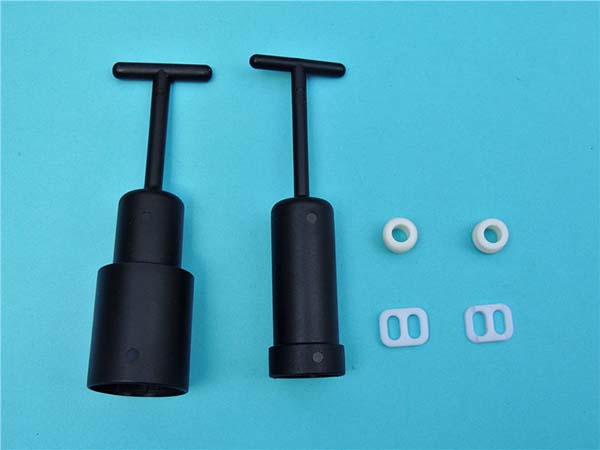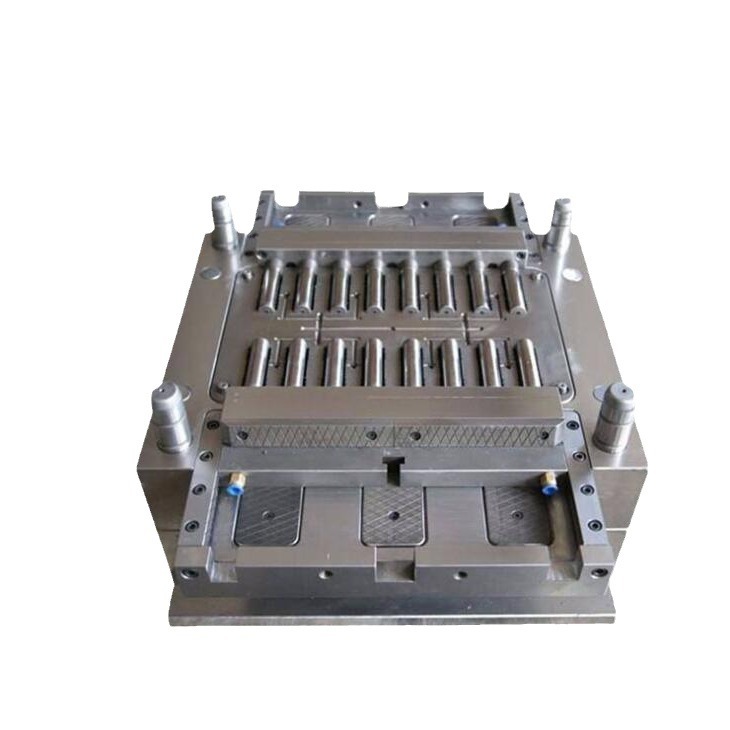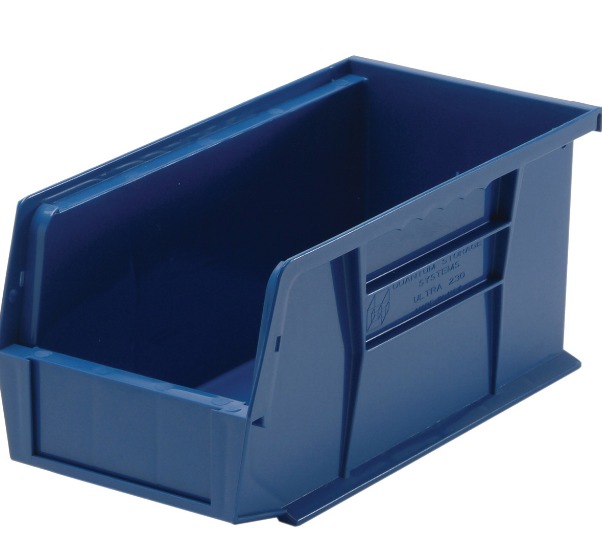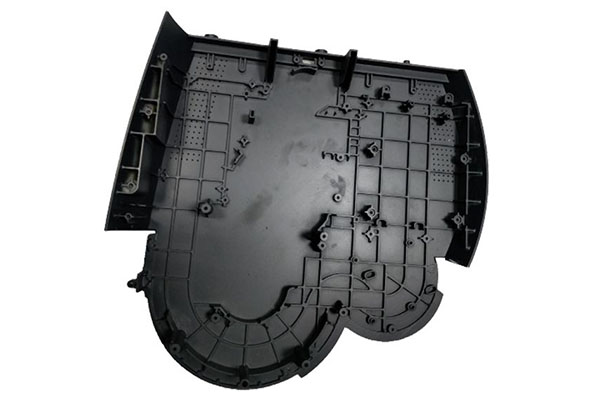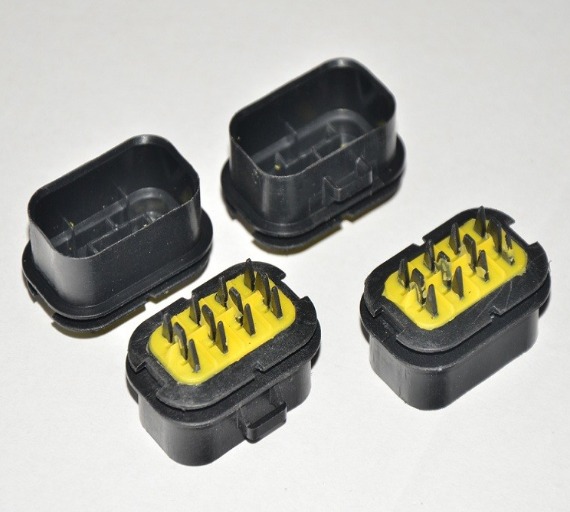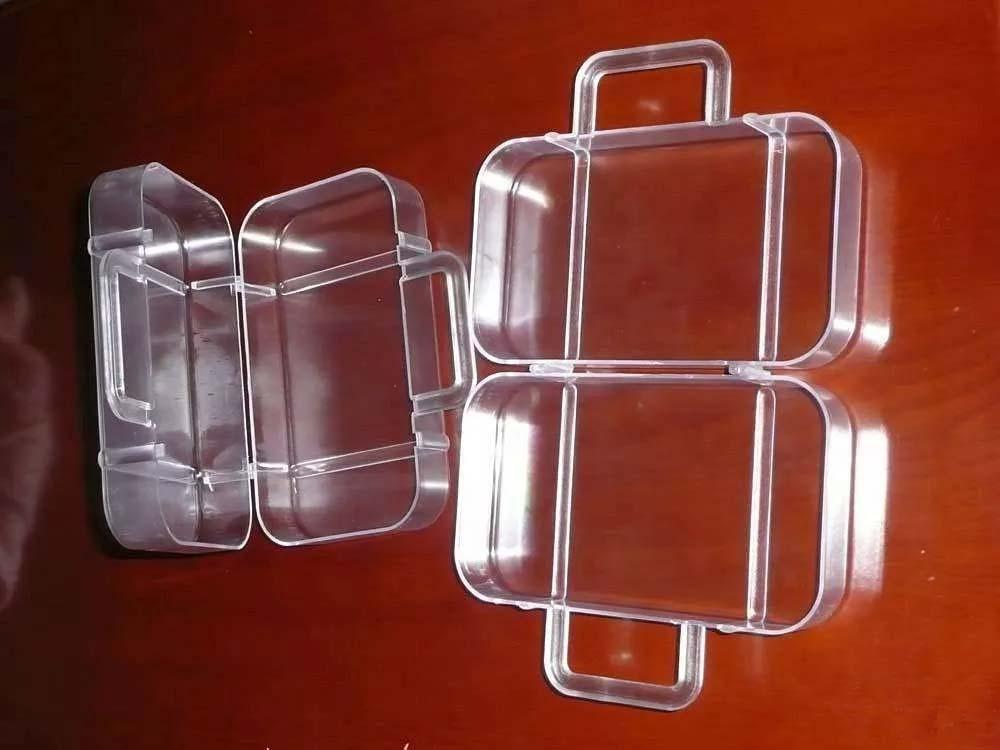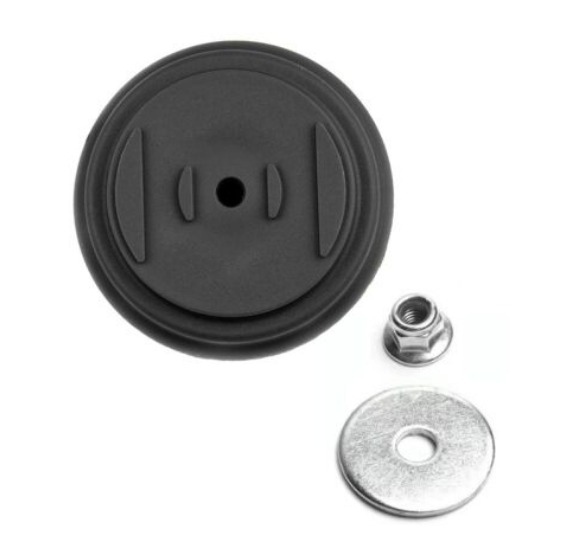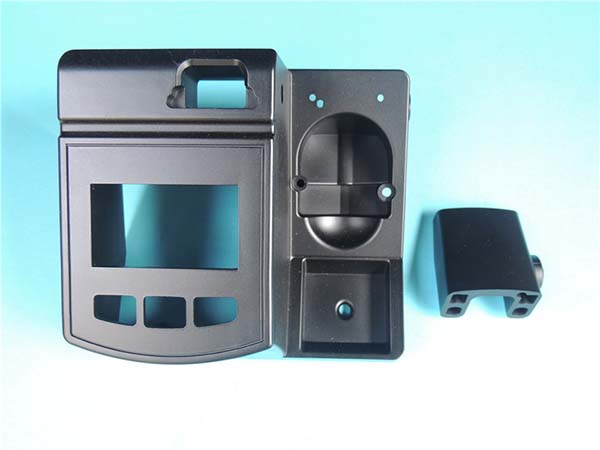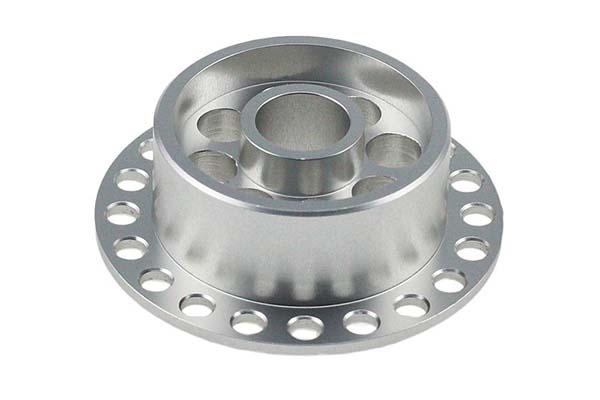Introduction to Cold Runner Injection Molding
What is Cold Runner Injection Molding?
Cold runner injection molding is a widely - used manufacturing process in the plastics industry. It is a subset of the injection molding technique, which is crucial for mass - producing plastic parts with high precision and efficiency. In cold runner injection molding, the runner system, which is the channel through which the molten plastic flows from the injection unit to the mold cavities, is not heated. Instead, it relies on the natural heat of the molten plastic and the cooling system of the mold to function properly. This process is in contrast to hot runner injection molding, where the runner system is kept hot throughout the molding cycle.
Cold runner injection molding plays a significant role in the injection molding landscape. It is suitable for a wide range of applications, from small consumer goods like toys and household items to large - scale industrial components. The ability to produce multiple parts in a single shot makes it highly efficient for high - volume production runs.
The Working Principle
- Plastic Melting: The process begins with plastic pellets being fed into the hopper of the injection molding machine. These pellets are then conveyed into a heated barrel. Inside the barrel, a screw rotates, which not only transports the plastic but also compresses and shears it. Frictional heat generated by the screw's rotation, combined with the external heating elements on the barrel, melts the plastic pellets into a viscous, molten state. For example, if we are using polyethylene (PE) pellets, they start to soften and transform into a flowing liquid - like substance at temperatures typically around 130 - 170°C depending on the specific grade of PE.
- Injection into the Mold Cavity: Once the plastic is fully molten, the screw moves forward, acting as a piston. This forward movement forces the molten plastic through the sprue (the main channel connecting the injection unit to the mold), and then into the runner system. In cold runner injection molding, the runner system is a network of unheated channels within the mold. The molten plastic flows through these cold runners and is distributed to multiple gate points, which are the openings that lead into the individual mold cavities. The gates control the flow rate and pressure of the plastic entering each cavity. For instance, in a multi - cavity mold for producing plastic bottle caps, the molten plastic will be evenly distributed through the cold runners to each of the cap - shaped cavities.
- Cooling and Curing: After the mold cavities are filled with the molten plastic, the cooling process begins. The mold is equipped with a cooling system, usually consisting of channels through which a coolant (such as water) circulates. As the coolant flows through these channels, it absorbs the heat from the molten plastic, causing it to cool and solidify. The cooling time is a critical factor as it affects the cycle time of the injection molding process and the quality of the final product. If the cooling is too fast, it may cause internal stresses and warping in the plastic part; if it's too slow, the production efficiency will be reduced. Once the plastic parts have cooled and solidified sufficiently, the mold opens, and the parts are ejected, ready for further post - processing if required.
Applications of Cold Runner Injection Molding
Cold runner injection molding has found its applications in a wide array of industries due to its efficiency and cost - effectiveness. Here are some of the key sectors where this technology is commonly used:
In the Automotive Industry
The automotive industry is one of the major beneficiaries of cold runner injection molding. For automotive interior components, such as dashboards, door panels, and seat trims, cold runner injection molding allows for high - volume production with consistent quality. For example, a dashboard typically has a complex shape with various features like instrument clusters, air vents, and storage compartments. Cold runner injection molding can precisely create these parts with smooth surfaces and accurate dimensions, enhancing the overall aesthetics and functionality of the vehicle interior.
Car headlight housings are another application area. These housings need to have a specific shape to properly hold the light - emitting components and lenses. Cold runner injection molding enables the production of headlight housings with high precision, ensuring a perfect fit for the bulbs, reflectors, and lenses. This not only improves the optical performance of the headlights but also contributes to the overall safety of the vehicle. According to industry statistics, in large - scale automotive manufacturing, cold runner injection molding can reduce production costs by up to 20% for these types of components compared to some other manufacturing methods, while maintaining high - quality standards.
In Consumer Electronics
In the consumer electronics sector, cold runner injection molding is used for products like mobile phone cases, laptop covers, and computer keyboard keys. Mobile phone cases, which come in a variety of colors, textures, and designs, are mass - produced using cold runner injection molding. This process allows for the creation of thin - walled, lightweight cases that protect the phone while also being aesthetically pleasing. For instance, a sleek and stylish phone case with a non - slip texture can be efficiently produced in large quantities through cold runner injection molding.
Computer accessories, such as mouse housings and keyboard keycaps, also benefit from this technology. Keycaps need to be precisely shaped for comfortable typing, and cold runner injection molding can achieve the required precision. It can produce keycaps with consistent thickness and smooth surfaces, enhancing the typing experience. In the production of consumer electronics, cold runner injection molding can increase production efficiency by 30 - 40%, meeting the high - volume demands of the market.
Other Industries
In the medical device industry, cold runner injection molding is used for manufacturing components like syringes, IV connectors, and medical instrument housings. These components must meet strict quality and hygiene standards. Cold runner injection molding can produce them with high precision and in a clean environment, ensuring the safety and reliability of medical devices.
For daily necessities, such as plastic cups, food containers, and bathroom accessories, cold runner injection molding is a cost - effective production method. It can produce these items in large numbers with different shapes and sizes, meeting the diverse needs of consumers. For example, a stackable food container with a tight - fitting lid can be efficiently produced through cold runner injection molding, providing convenience for consumers in food storage.
Considerations When Using Cold Runner Injection Molding
Mold Design
Mold design is of utmost importance in cold runner injection molding as it directly impacts the quality and efficiency of the production process.
Runner Layout: The layout of the cold runner system should be carefully planned. A well - designed runner layout ensures even distribution of the molten plastic to all the mold cavities. For example, in a multi - cavity mold, a balanced runner system, such as a tree - like or a circular layout, can minimize pressure drops and flow rate differences. A tree - like runner layout starts with a main runner that branches out into smaller runners, similar to the branches of a tree. This layout is efficient for molds with cavities arranged in a linear or semi - circular pattern. In contrast, a circular runner layout is beneficial when the cavities are evenly spaced around a central point. It provides a more uniform flow of the molten plastic, reducing the risk of short - shots (where the plastic does not fully fill the cavity) and ensuring consistent part quality across all cavities.
Gate Design: The gate is the connection point between the runner and the mold cavity, and its design is crucial. Different types of gates are suitable for different part geometries and production requirements. Side gates are commonly used for parts with simple shapes. They are easy to machine and can be easily removed from the part after molding. For parts with high - precision requirements or complex shapes, pin - point gates are a better choice. Pin - point gates can provide a more precise control of the plastic flow into the cavity, resulting in parts with better surface finish and dimensional accuracy. However, they require more careful mold design and may be more difficult to remove from the part compared to side gates. Additionally, the size and location of the gate can affect the flow of the plastic. A gate that is too small may cause high shear stress on the plastic, leading to material degradation and poor part quality. On the other hand, a gate that is too large may result in excessive plastic flow, causing flash (thin, unwanted layers of plastic on the part) and difficulties in removing the runner from the part.
Material Selection
The choice of plastic material has a significant impact on the cold runner injection molding process.
Viscosity: Different plastic materials have different viscosities when in a molten state. High - viscosity materials, such as some engineering plastics like polycarbonate (PC), require higher injection pressures to flow through the cold runner system and fill the mold cavities. This is because the resistance to flow is greater in high - viscosity materials. In contrast, low - viscosity materials, like polyethylene (PE), can flow more easily. For example, when using PC in cold runner injection molding, the injection pressure may need to be increased by 30 - 50% compared to using PE to ensure proper filling of the cavities. If the injection pressure is not sufficient for high - viscosity materials, it can lead to incomplete filling of the mold cavities or long flow paths that may cause the plastic to cool down prematurely before filling the entire cavity.
Shrinkage Characteristics: Each plastic material has its own shrinkage rate during the cooling and solidification process. Materials with high shrinkage rates, such as polypropylene (PP), may experience more significant dimensional changes after molding. This needs to be considered during mold design. For instance, if a part made of PP has tight dimensional tolerances, the mold cavity may need to be designed with larger dimensions to compensate for the shrinkage. Otherwise, the final part may be smaller than the required specifications. On the other hand, materials with low shrinkage rates, like some grades of acrylonitrile - butadiene - styrene (ABS), are more suitable for applications where dimensional accuracy is crucial.
Thermal Conductivity: The thermal conductivity of the plastic material affects the cooling process in cold runner injection molding. Materials with high thermal conductivity, such as certain filled plastics, can transfer heat more quickly to the mold walls, reducing the cooling time. This can lead to shorter cycle times and increased production efficiency. For example, a plastic material filled with metal particles may have a thermal conductivity that is 2 - 3 times higher than an unfilled version of the same base plastic. As a result, the cooling time for parts made from the filled material can be reduced by 20 - 30%, allowing for more parts to be produced in a given time period.
When selecting a plastic material for cold runner injection molding, it is advisable to consult with material suppliers. They can provide detailed information about the material's properties, recommended processing conditions, and potential challenges in the injection molding process.
Process Control
Controlling the right parameters during cold runner injection molding is essential to ensure high - quality parts and efficient production.
Temperature Control: Temperature plays a critical role in the process. The temperature of the molten plastic entering the cold runner system needs to be carefully monitored. If the plastic temperature is too low, it may solidify prematurely in the runner, causing blockages and preventing the proper filling of the mold cavities. On the other hand, if the temperature is too high, it can lead to material degradation, such as discoloration and loss of mechanical properties. For most common plastics like ABS, the recommended melt temperature ranges from 200 - 250°C. Additionally, the temperature of the mold itself is also important. The mold cooling system should be designed to maintain a consistent temperature across the mold surface. A well - balanced cooling system can ensure uniform cooling of the plastic parts, reducing the risk of warping and internal stresses. The coolant temperature is typically maintained at around 20 - 30°C, depending on the plastic material and the part geometry.
Pressure Control: Injection pressure is another key parameter. It must be sufficient to force the molten plastic through the cold runners and into the mold cavities. However, excessive pressure can cause problems such as flash, over - packing of the part (which can lead to high internal stresses), and damage to the mold. The injection pressure required depends on factors like the plastic material's viscosity, the complexity of the mold design, and the length of the flow path. For example, for a complex mold with long flow paths and a high - viscosity plastic, the injection pressure may need to be in the range of 100 - 150 MPa. During the injection process, the pressure profile can also be adjusted. A step - down pressure profile, where the pressure is gradually reduced towards the end of the filling stage, can help to prevent over - packing and ensure a smooth filling of the cavities.
Cycle Time: The cycle time, which includes the injection, cooling, and ejection phases, needs to be optimized. A shorter cycle time can increase production efficiency, but it should not be at the expense of part quality. If the cooling time is too short, the plastic parts may not be fully solidified, leading to deformation during ejection. On the other hand, an overly long cycle time reduces productivity. For small plastic parts made from a fast - cooling plastic like PE, the cycle time can be as short as 10 - 15 seconds, while for larger or more complex parts made from slower - cooling materials, the cycle time may be 30 - 60 seconds or even longer. By carefully controlling the temperature, pressure, and cycle time, manufacturers can achieve consistent part quality, high production efficiency, and reduced waste in cold runner injection molding.
Yigu Technology's View
As a non - standard plastic metal products custom Supplier, Yigu Technology highly values cold runner injection molding for its wide - ranging applications, especially in large - scale production scenarios. The cost - effectiveness of cold runner injection molding makes it an ideal choice for mass - producing plastic parts. By carefully optimizing mold design, material selection, and process control, Yigu Technology can produce high - quality products that meet diverse customer requirements.
With years of experience in the field, Yigu Technology has mastered the key techniques of cold runner injection molding. Our professional team can handle complex mold designs, select the most suitable materials, and precisely control the injection molding process. This enables us to ensure the stability and high quality of product performance. Whether it's producing components for the automotive industry or consumer electronics products, Yigu Technology has the ability to provide customized solutions with high efficiency and quality, helping customers gain a competitive edge in the market.
